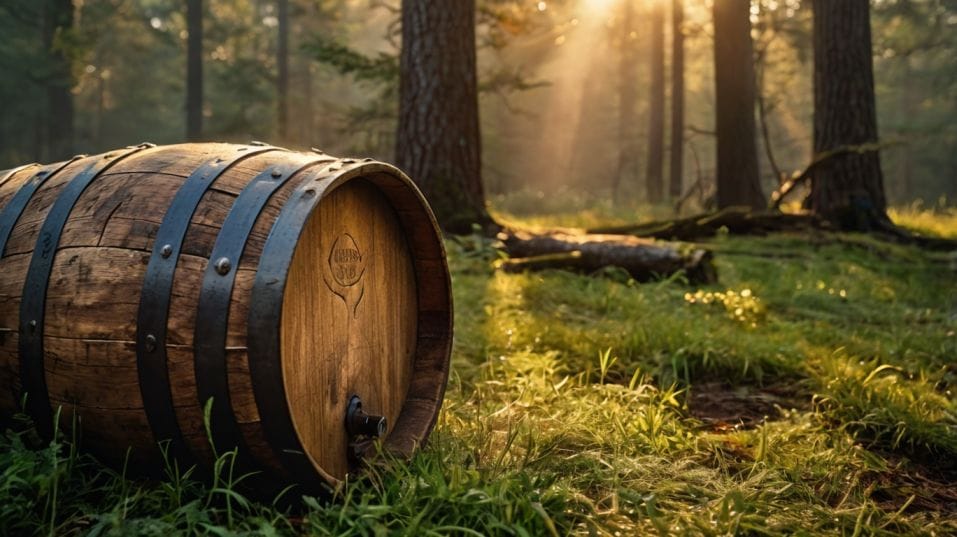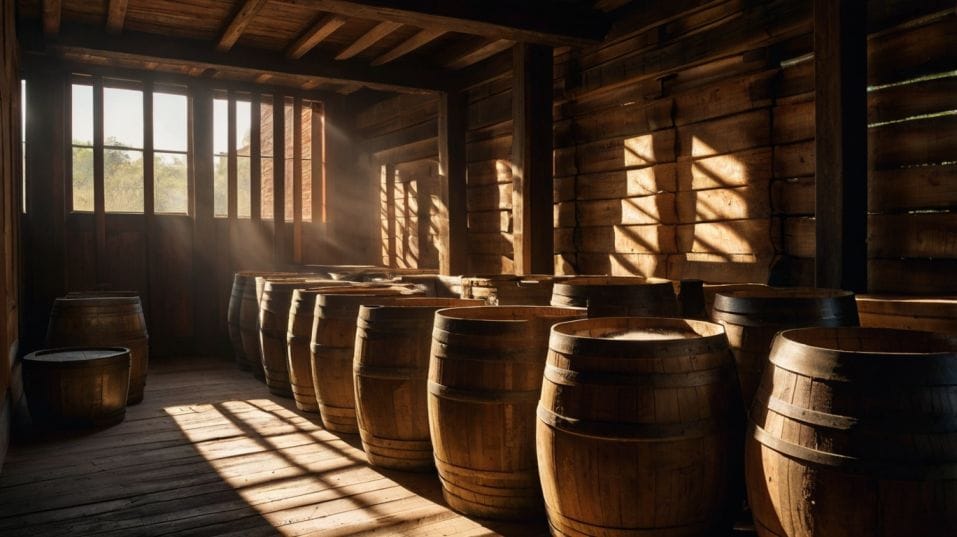The Legend of the Angel’s Share
Discover how the angel’s share shapes whiskey’s soul—and how understanding it can sharpen your palate, your collection, and your confidence.

Ever wonder why older whiskey feels more alive? It’s not just age—it’s what disappears along the way. As whiskey matures, a portion vanishes into the air.
Distillers call this the angel’s share. But it’s more than evaporation. It’s transformation. Flavor intensifies. Harshness fades.
What’s left isn’t just older—it’s wiser. If you’re curious about whiskey, this is where your journey begins. Not with tasting notes. With the quiet loss that makes every sip count.
The Evaporation That Gives Whiskey Its Soul
At its core, the angel’s share is a simple truth: whiskey evaporates as it ages. Each year, a small percentage—typically 2–5%—escapes through the barrel’s porous oak into the surrounding air.
That doesn’t sound like much until you consider the timeline. Over 12 years, a barrel might lose nearly half of its original volume. But this isn’t just about volume. It’s about transformation.
The loss intensifies what remains. Fewer molecules, but more flavor. The water and alcohol don’t evaporate evenly, either.

Humidity vs. Dryness: Why It Matters
In dry climates, water disappears faster, boosting the proof. In humid regions, the alcohol leaves first, softening the spirit’s bite. Either way, the result is a living, breathing spirit that evolves in every direction—flavor, mouthfeel, finish.
When you drink a well-aged whiskey, you’re tasting survival. Everything in your glass has been tested by time.
The weak flavors, the harsh edges—they’re mostly gone. What’s left is concentrated, refined, and complex. You don’t just taste age. You taste endurance.
The Barrel Isn’t a Container. It’s a Catalyst.
If you’re focused only on distillation—grain recipes, copper stills, fermentation—you’re missing the biggest part of the story. Distillers may set the stage, but the barrel writes the ending.
Fresh new-make spirit tastes raw and sharp, like grain alcohol with vague fruitiness.
Leave it in oak for a decade, and it becomes something else entirely—honeyed, spicy, rich with depth. That’s not just time doing the work. It’s the angel’s share refining it.
Wood Interaction: More Than Just Aging
As the spirit moves in and out of the wood, it pulls out compounds like lignin (vanilla), hemicellulose (caramel), tannins (bitterness and structure), and oak lactones (coconut and wood spice).
The evaporation rate speeds up this process by encouraging more interaction. In short: more evaporation equals more wood contact.
More wood contact means more complexity. Without the angel’s share, you’d get flat, overly sweet spirit with no backbone.
So when you nose a glass, don’t just search for tasting notes. Try to feel the architecture. Is it tight and focused? Broad and oaky?
Spicy with heat or mellow with depth? That structure is the barrel’s voice, and the angel’s share is its amplifier.
Collecting? Know What You’re Gambling
Here’s what collectors sometimes forget: the longer a whiskey ages, the more unpredictable it becomes. Yes, older whiskey is rarer—because so much of it has evaporated. But rarity doesn’t guarantee greatness.
Evaporation isn’t consistent. Even barrels from the same batch can age wildly differently depending on where they sit in the warehouse.
A barrel on the top floor, exposed to more heat and airflow, will age faster and lose more volume. A barrel at the bottom might take longer to develop but retain more liquid—and sometimes, more nuance.
Age Isn’t a Scorecard
So when you’re eyeing that 18-year-old single barrel, don’t assume it’s better than a 10-year bottle. The angel might’ve taken too much. Over-oaked whiskey is real, and it’s not pleasant—dry, bitter, with a splintery finish that kills complexity.
The best collectors aren’t chasing high age statements. They’re chasing balance. Whiskey where the angel took enough to deepen the flavor, but not so much that the soul vanished.
Climate Isn’t Just Background—It’s a Flavor Engine
Storage conditions are a huge piece of the puzzle. Climate doesn’t just influence how fast whiskey ages. It determines how it ages.
Hot vs. Cool Aging
In hot, dry environments—think central Texas or the high desert—whiskey loses water fast, increasing proof and intensity. You’ll taste concentrated spice, tannic grip, and sometimes a touch of heat.
In cooler, humid zones—like coastal Scotland or lower-level Kentucky rickhouses—the alcohol evaporates first, softening the proof but extending the aging window. The flavors stretch out more gradually.
You get gentle layers, rounded textures, and smoother transitions from sip to finish.
The Warehouse Floor Game
Even within the same warehouse, location matters. The top rack might push a whiskey to peak maturity in 6 years. The bottom might need 10.
Some distilleries rotate barrels to even this out. Others embrace the chaos and pick the best from the batch.
So next time you're reading a label, ask more than "how old is it?" Ask where it was aged, how it was stored, and what that might mean for the flavor in your glass.
The Angel’s Share Makes Every Bottle a Small Miracle
Evaporation isn’t just a loss. It’s a sacrifice. Every bottle that makes it to the shelf has already paid its price. The longer it waited, the higher the cost—and the deeper the potential reward.
What This Means for You
This changes how you taste. Every sip becomes more intentional. You’re not just drinking what the distiller made. You’re drinking what time allowed to survive.
This changes how you collect. You stop hoarding trophy bottles and start searching for stories—about climate, rickhouse levels, wood quality, and the years in between.
And it changes how you talk about whiskey. You don’t just say “it’s smooth” or “it’s bold.” You talk about structure, evolution, pressure, and patience. You sound like someone who knows.
Final Thoughts
If you want to drink smarter, collect better, and taste more confidently, respect what the angels took. Learn to sense what’s missing as much as what’s there.
Age, storage, evaporation—these aren’t trivia points. They’re the forces that make whiskey worth drinking.
Start today. Pour something that’s been in the barrel long enough to feel it. Taste slowly. Let the heat rise, the finish unfold.
Think about what had to disappear so this flavor could exist. Whiskey doesn’t just age. It survives. So drink like it matters.




